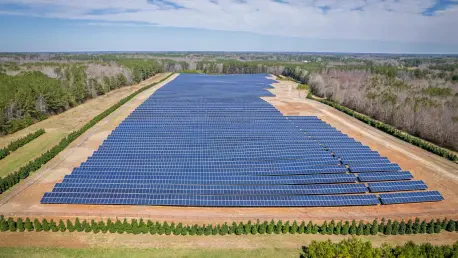As the energy sector continues to evolve, few companies are as pivotal to the renewable energy transition as Portugal’s EDP. Today, I’m thrilled to sit down with Christopher Hailstone, our utilities expert with deep expertise in energy management, renewable energy, and electricity delivery. With a keen eye on grid reliability and security, Christopher offers invaluable insights into EDP’s ambitious strategic plans and the broader trends shaping the industry. In our conversation, we explore EDP’s massive investment in renewables, the growing electricity demand from data centers, the company’s financial targets, and the market’s reaction to their recent announcements.
Can you walk us through the core elements of EDP’s $14 billion investment plan for 2026 to 2028?
Absolutely, Silvia. EDP’s plan is a bold step toward reinforcing its position in the global energy market. The 12 billion euros, equivalent to $14 billion, will primarily fuel expansion in renewable energy capacity, with a significant emphasis on the U.S. market. About 7.5 billion euros are earmarked for EDP Renovaveis, their renewables arm, to boost wind, solar, and battery storage systems. The focus on the U.S. is strategic, given the surging demand for clean energy, especially from data centers. This plan isn’t just about growth; it’s about positioning EDP at the forefront of the energy transition.
What makes the U.S. market such a critical focus for EDP’s expansion?
The U.S. stands out due to its rapid increase in electricity demand, particularly from data centers that power the tech industry. These facilities require consistent, scalable energy solutions, and renewables offer a faster deployment compared to alternatives like nuclear. EDP sees an opportunity to meet this demand with sustainable options, and their investment reflects a commitment to capturing a significant share of this growing market. It’s also about building long-term partnerships with tech giants through power purchase agreements, which provide stability for both sides.
Speaking of renewables, can you dive deeper into the 7.5 billion euros allocated to EDP Renovaveis and what areas will see the most impact?
Certainly. EDP Renovaveis, already a major player as the world’s fourth-largest wind energy producer, is channeling this investment into a mix of wind, solar, and battery energy storage systems. While the exact breakdown isn’t fully public, wind and solar are likely to dominate due to their scalability and proven track record. Storage is also a key piece of the puzzle, as it helps balance the grid by storing excess energy for peak demand times. The goal is to increase capacity to 25 gigawatts by 2028, up from 20 gigawatts now—a 25% jump that underscores their aggressive push into clean energy.
How do battery energy storage systems fit into EDP’s broader renewable strategy?
Battery storage is a game-changer for renewables. It addresses one of the biggest challenges with wind and solar: intermittency. By storing energy when production is high and releasing it when demand peaks, these systems ensure a more reliable power supply. For EDP, integrating storage into their portfolio means they can offer a steadier energy solution to clients like data centers, which need uninterrupted power. It’s a critical component to making renewables not just viable, but competitive against traditional energy sources.
Shifting to the rising demand for electricity from data centers in the U.S., how is EDP positioning itself to capitalize on this trend?
EDP is leveraging its renewable assets to meet this demand head-on. Data centers are energy hogs, and with the tech boom, their power needs are skyrocketing. EDP’s strategy hinges on offering clean, quick-to-deploy energy solutions through renewables. They’re also locking in long-term power purchase agreements, or PPAs, with major tech companies. These deals provide predictable revenue for EDP while giving tech firms the sustainable energy they increasingly prioritize. It’s a win-win that positions EDP as a go-to provider in this space.
What advantages do renewables offer over other energy sources when it comes to powering data centers?
Renewables have a clear edge in speed and cost predictability. Unlike nuclear plants, which take years to build, wind and solar projects can be rolled out relatively quickly to meet urgent demand. Compared to gas, renewables aren’t tied to volatile fuel prices, so they can offer fixed-rate PPAs that tech companies find attractive for budgeting. Plus, there’s the sustainability angle—many of these firms have green commitments, and partnering with a renewable provider like EDP helps them meet those goals.
Let’s talk about EDP’s financial outlook. The company has stuck to a recurring EBITDA target of around 4.9 billion euros for 2025. What’s driving this conservative approach?
EDP’s decision to maintain this target reflects a balance between ambition and caution. They’re navigating a complex landscape with significant investments in renewables and networks, which require hefty upfront capital. By holding steady at 4.9 billion euros for 2025, they’re signaling to investors that they’re focused on sustainable growth rather than overpromising. It’s also a way to manage expectations while they ramp up capacity and await returns from newer projects, especially in the U.S.
With EBITDA expected to rise to 5.2 billion euros by 2028, what factors are contributing to this gradual increase?
The uptick to 5.2 billion euros by 2028 is tied to the maturation of their renewable investments. As new wind, solar, and storage projects come online, particularly in high-demand markets like the U.S., EDP expects stronger revenue streams. Additionally, the growing portfolio of PPAs with tech companies provides a stable income base. Operational efficiencies and economies of scale as their capacity grows to 25 gigawatts will also play a role in boosting profitability over time.
EDP’s shares dropped 6% after the strategic plan was announced. How do you interpret this market reaction?
The 6% drop in shares suggests some investor disappointment, likely tied to the profit targets falling below analyst expectations. The recurring net income projections, hovering between 1.2 and 1.3 billion euros through 2028, were seen as underwhelming, especially given the scale of investment. However, I think the market might be overlooking the long-term value of EDP’s focus on renewables and strategic positioning in growth areas like data center power. Short-term reactions don’t always capture the bigger picture of transformation underway.
What’s your forecast for the renewable energy sector’s role in meeting global electricity demand over the next decade?
I’m optimistic about renewables taking a leading role in meeting global electricity demand over the next ten years. With technology costs continuing to drop and policy support growing, wind and solar are becoming the backbone of new capacity additions. The demand surge from data centers, electric vehicles, and industrial electrification will only accelerate this shift. Companies like EDP, with their focus on scalable solutions and storage, are well-placed to lead. I expect renewables to account for a majority of new power generation by the early 2030s, reshaping how we think about energy security and sustainability.









